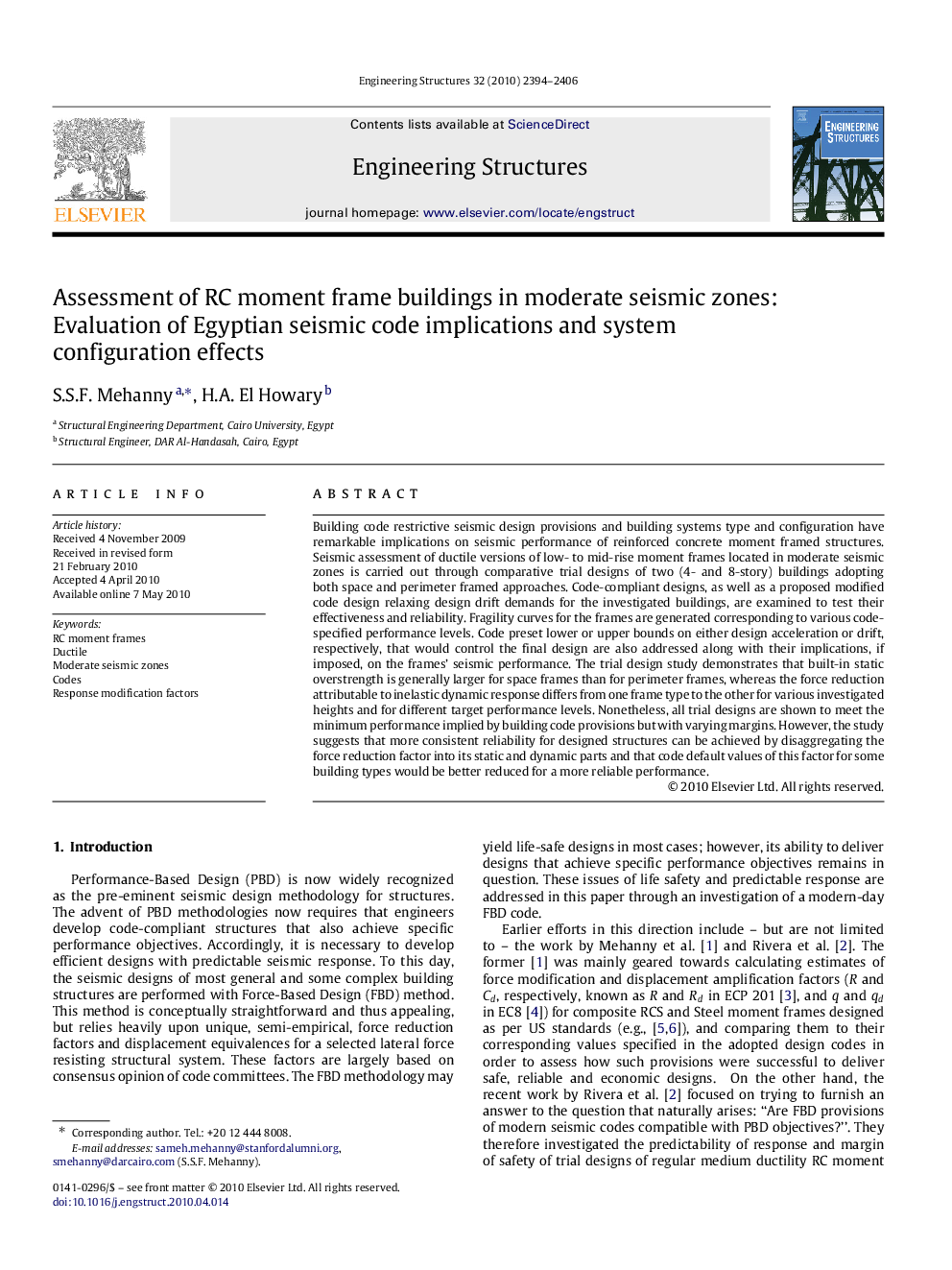| Article ID | Journal | Published Year | Pages | File Type |
|---|---|---|---|---|
| 268240 | Engineering Structures | 2010 | 13 Pages |
Building code restrictive seismic design provisions and building systems type and configuration have remarkable implications on seismic performance of reinforced concrete moment framed structures. Seismic assessment of ductile versions of low- to mid-rise moment frames located in moderate seismic zones is carried out through comparative trial designs of two (4- and 8-story) buildings adopting both space and perimeter framed approaches. Code-compliant designs, as well as a proposed modified code design relaxing design drift demands for the investigated buildings, are examined to test their effectiveness and reliability. Fragility curves for the frames are generated corresponding to various code-specified performance levels. Code preset lower or upper bounds on either design acceleration or drift, respectively, that would control the final design are also addressed along with their implications, if imposed, on the frames’ seismic performance. The trial design study demonstrates that built-in static overstrength is generally larger for space frames than for perimeter frames, whereas the force reduction attributable to inelastic dynamic response differs from one frame type to the other for various investigated heights and for different target performance levels. Nonetheless, all trial designs are shown to meet the minimum performance implied by building code provisions but with varying margins. However, the study suggests that more consistent reliability for designed structures can be achieved by disaggregating the force reduction factor into its static and dynamic parts and that code default values of this factor for some building types would be better reduced for a more reliable performance.
